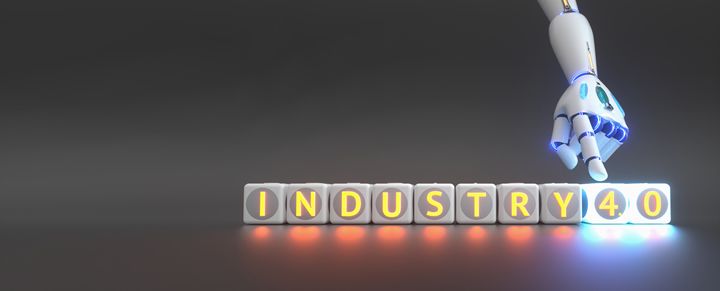AI can provide superpowers to operators. But that can only happen if it's highly accessible and manageable. We give engineers purpose-built engineering solutions that augments their work.
Q&A with Humera Malik, CEO | Canvass AI
Tell me a bit about Canvass AI, industrial AI and the type of problems you solve?
Canvass AI has built an impactful set of industrial AI solutions that are implemented in process industries, such as oil and gas, chemicals, steel and other such sectors. Our software is designed to make industrial AI readily accessible to the people, typically engineers, who can use it most to improve operational excellence. It’s a user-centric approach that lets customers quickly use our industrial AI more broadly, whether to maximize an asset by predicting failures or improving its operational efficiency, or improving manufacturing quality, all while reducing energy, wastewater and GHG emissions in the process.
Industry 4.0 holds a lot of promise, but you take the position that this remains largely unrealized, what are the challenges and how has Canvass AI addressed these challenges?
There’s an estimated US $100 trillion in value that can be unlocked over the next seven years just by mastering the Industrial Internet of Things. As a result, companies have been cajoled to adopt a data first strategy, that is upload all the data you can to the cloud and then think about what problems you can solve with it. However, most industrials and manufacturers still operate like they did 50 years ago with many legacy systems present. Safety, understandably prevails in most of what they do so technology must be trusted to start with.
Canvass AI’s journey has been all about addressing these industry challenges. It has a proven methodology that these challenges can be overcome by humanizing AI, focusing on business value, building in automation, activating scalability, and achieving ROI.
What do you mean by Humanizing AI?
AI can provide superpowers to operators. But that can only happen if it’s highly accessible and manageable. We give engineers purpose-built engineering solutions that augment their work. Humanizing involves building confidence and trust. This means the technology needs to explain itself, as a fellow worker would if they were taking a corrective action.
How is focusing on business value different than what’s going on now, and what values can be gained?
Advanced technology has the tendency to attract the hardest problems to solve, some that have been plaguing production for years. But that is the least rewarding approach as often what’s solved has taken too long and the cost justification may turn out to be impractical. There are, however, common asset reliability problems that persist across multiple operations and plants, which require constant monitoring and adjustment to maintain. By concentrating on these, the business impact is immediate, and the ROI is double-sided with not just an economic benefit, but a contribution to sustainability.
The next steps would be to build in automation and activate scalability. Pre-engineered AI solutions are essentially software robots. They optimize and operate a process, an asset, or workflow in closed or open loop mode. The operator has complete control over the AI operating state.
Similar operations will differ from plant to plant, but customers using pre-engineered AI solutions can optimize operations dramatically across locations, potentially saving 30-40% of their engineering time with a 10-30% enhancement in process optimization in just a single location. These AI solution deployments can run in changing conditions by feeding operating data directly to the solutions in use. Scalability also depends on integration with existing OT and IT systems. This means layering AI-driven analytics on legacy APC, MES, and EMS systems, streaming predictions to existing operator systems, and feeding sustainability reporting on GHG emissions.
Can you share a use case from a customer using one of your solutions?
One of our customers in the food and beverage industry has a cogen plant, powered by natural gas. Fuel was their second largest expense after raw materials, so they looked to Canvass AI to forecast and optimize boiler efficiency. In phase 1, the software provided real-time advisory to plant engineers resulting in 0.7% reduction in energy costs. In Phase 2, the solution was implemented in a closed loop with the control systems to provide real-time optimized control with the ability for operators to intervene if needed. The project yielded results in just 8 weeks, with a gain of 5.09% in thermal efficiency, $330,000 in annual energy savings, and a 4% cut in GHG emissions.
What’s a good measure on achieving ROI?
ROI must be within immediate reach for any AI effort to be sustainable. For every dollar invested in industrial AI it should be possible to return at least 3x annually just on operational efficiencies alone. With pre-engineered AI solutions this ROI could be achieved within 60-90 days of project start. The ROI can also be logarithmic in effect when focusing on specific use cases such as asset failure in the field where returns can be as high as 20x. There’s a bonus that comes free. With better efficiency comes less energy, water use, and less waste. Energy reduction on its own leads to carbon abatement, which industrials can take to the bank.

Humera Malik is CEO of Canvass AI, a leading software provider that empowers the world’s largest industrial companies with actionable intelligence to make data-driven operational decisions. Canvass AI was named by CB Insights as one of the top 50 technology companies that is making an impact in advanced manufacturing in 2022. Internationally, Ms. Malik is one of the leading voices in Artificial Intelligence and how it can help the industrial sector to propel growth, accelerate sustainability, and augment human expertise.
The content & opinions in this article are the author’s and do not necessarily represent the views of ManufacturingTomorrow
Featured Product


